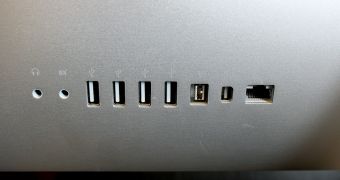Apple has released a Support document which shows customers how to identify the USB ports on their Macs, complete with data transfer speeds, depending on the USB (1.0 / 2.0 / 3.0) version they have.
Customers looking to check the status of their USB ports can use System Information on a new OS X version, or System Profiler on OS X versions like Snow Leopard and older.
There, users can see how fast their USB ports are and what's currently connected to them, such as mice, keyboards, or external storage solutions.
To get to the respective info panel, customers must follow these simple steps, according to the Cupertino giant.
1. Press and hold the Option key on your keyboard, and click the Apple menu (). 2. Choose System Information or System Profiler. 3. In the window that appears, select USB from the left column.
A USB Device Tree will appear, showing each connected device underneath the port it's connected to. Users can disregard the port connecting the FaceTime HD camera to the computer’s motherboard, because that one’s internal, Apple says.
The company explains for customers who own new-generation Macs that “USB 3 is capable of communicating faster than USB 2, and both of these are faster than USB 1.”
“To check the potential speed of a connected device, select it in the device tree, then look at the speed designation in the lower part of the window.”
Users who believe a device isn’t taking advantage of high-speed specifications are told to try connecting it directly to a USB port on the computer.
Apple also includes a brief chart which details the data transfer speeds for each USB specification in part, such as 1.5 Mbp/sec for USB 1 and 5 Gbp/sec for USB 3. Visit Apple’s KB article HT6053 for the full scoop.

 14 DAY TRIAL //
14 DAY TRIAL //